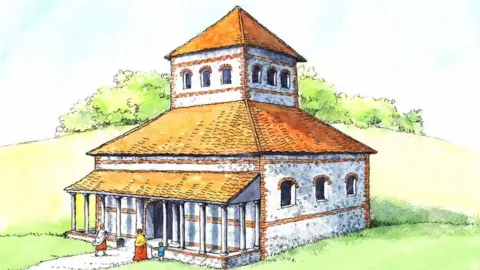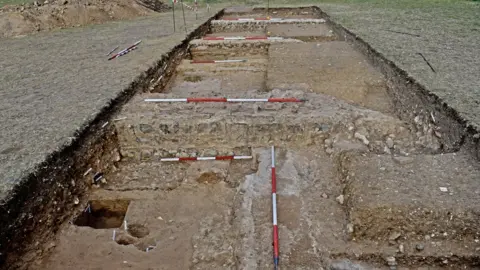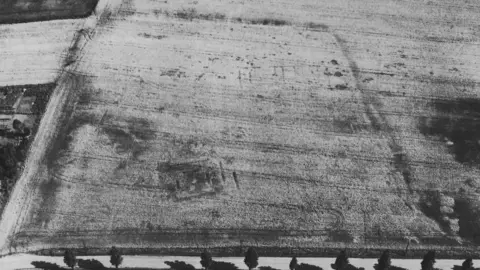Roman Caistor: 'One of largest' Roman Britain temples revealed in Norfolk
 Jenny Press/Caistor Roman Project
Jenny Press/Caistor Roman ProjectA dig has revealed "one of the largest" temple buildings in Roman Britain.
The 2nd Century temple site at Caistor St Edmund, near Norwich, has been known about since 1957, but its true scale has only just emerged.
It was built by the Iceni tribe, best known for their leader Boudicca who rebelled against the Romans in AD61.
Archaeologist Prof Will Bowden said its size, 20m by 20m (65ft by 65ft), showed "how important this cult was to the Iceni".
 Caistor Roman Project
Caistor Roman ProjectThe community archaeology group Caistor Roman Project spent three weeks at the temple site in 2019, working in partnership with the University of Nottingham.
Prof Bowden, the project director, said the post-excavation process had since been completed and this "confirmed that we were looking at a building that was exceptional".
He said it was "one of the largest of its type in Roman Britain" which "indicates not only the importance with which the site was regarded but also that the Iceni had the resources to construct major public buildings should they choose to".
It has remained unknown which gods were worshipped there. Evidence of the worship of Roman gods has been found but the Iceni could have also dedicated the temple to a local deity, as happened at Bath.
 Caistor Roman Project
Caistor Roman Project Culture Club/Getty Images
Culture Club/Getty ImagesCaistor was the site of Venta Icenorum, the smallest Roman regional capital in Britain.
Its forum - the main public building - was less than a quarter of the size of Verulamium, now known as St Albans.
Historians saw its small scale as a sign of the Iceni's impoverishment after Queen Boudicca led the Iceni tribe against the Romans.

Find BBC News: East of England on Facebook, Instagram and Twitter. If you have a story suggestion email [email protected]
